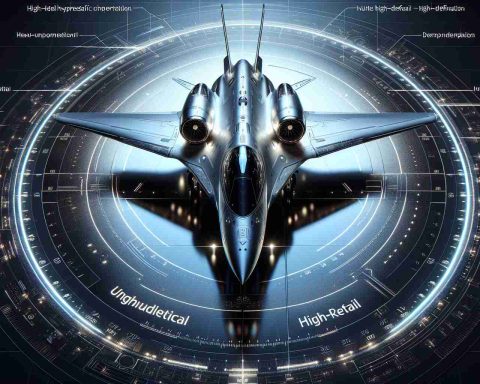London and East Anglia Experience Sonic Boom Amid Air India Security Scare
On Thursday, the Royal Air Force (RAF) was compelled to scramble a Typhoon fighter jet in response to a bomb threat reportedly directed at an Air India flight traveling from Mumbai to London. The aircraft completed its journey safely, landing at London Heathrow Airport under the careful guidance of civilian air traffic control.
RAF Coningsby was tasked with deploying Quick Reaction Alert Typhoon fighter jets to intercept the civilian aircraft as a precautionary measure. A representative from the Royal Air Force explained that the interception was routine and carried out without any notable incidents, allowing the jetliner to continue to its scheduled destination.
During the operation, residents in the East Anglia region of England were startled by the sound of a loud sonic boom. This was caused by the RAF jets, which had been authorized to exceed the speed of sound for critical operational purposes.
The situation has now been placed under civilian jurisdiction, with authorities handling any further investigation. Despite the initial tension, the prompt response by the RAF and effective air traffic coordination ensured the safety of all onboard the Air India flight, concluding the episode without any harm.
The Impact of Sonic Booms on Everyday Life and Aviation Safety
Sonic Booms: A Closer Look at Their Effects
A recent incident involving an Air India flight en route to London has once again brought attention to the phenomenon of sonic booms. When the Royal Air Force (RAF) scrambled fighter jets to intercept the flight due to a bomb threat, the Mach-breaking speeds led to a loud sonic boom that reverberated through East Anglia, startling residents and disrupting daily routines. While the situation was resolved safely, it serves as a reminder of the complexities and consequences of supersonic flight in civilian spaces.
Understanding Sonic Booms
A sonic boom is the sound associated with the shock waves created when an object travels through the air faster than the speed of sound. This abrupt change in pressure can be startling, often resembling an explosion or thunder. While military aircraft routinely engage in supersonic flights, the noise disruption it causes is one reason commercial air travel continues to operate below these speeds.
Impact on Communities
For communities like those in East Anglia, sonic booms can lead to significant disturbances. Noise pollution from such incidents can affect people’s health by causing stress and sleep disturbances. Moreover, constant exposure might even warrant legal considerations for noise mitigation in affected areas. Despite these concerns, the reassurance of national security and the safety of those aboard the flight underscore why such measures are sometimes deemed necessary.
Sonic Booms and Aviation Safety
The decision to scramble RAF jets on Thursday highlights the UK’s preparedness and quick response to potential threats in its airspace. Ensuring the safety of passengers and crew is paramount, and swift actions like these exemplify the delicate balance between safety and disruption. However, as air travel continues to grow, discussions about the use of supersonic aircraft for both military and possibly commercial purposes are becoming increasingly relevant.
Controversies and Future Considerations
The use of sonic booms raises debates about environmental impact and community disturbance. As new technologies develop, there’s potential for quieter supersonic jets, such as NASA’s X-59 QueSST, which aims to minimize the noise impact. But until these advancements are mainstream, the challenges associated with supersonic travel remain a topic of contention among policymakers, environmentalists, and aviation professionals.
Any further developments in this area will heavily rely on technological advancements and regulatory decisions that weigh the benefits of supersonic travel against its societal and environmental costs.
For more on the intricacies of aviation and supersonic travel, consider visiting trusted aviation resources and governmental aviation safety sites.
The article has been updated: 2024-11-07 03:36
Here are some suggested related links:
– BBC News – A leading news organization that covers international stories, including aviation and security incidents.
– CNN – A major news network that provides extensive coverage of breaking news and events around the world, including aviation safety and security threats.
– Reuters – A global news agency that reports on various topics, including international affairs and safety concerns in air travel.
– The Guardian – A respected news outlet that covers a wide range of topics, including terrorism, aviation security, and international relations.
– Sky News – A news television channel that offers live updates and reports on significant global events, especially related to aviation.
– The New York Times – An influential newspaper that provides in-depth coverage of world news, including security issues affecting air travel.
– Airliners.net – An aviation-focused community and database that discusses news, events, and incidents related to airlines and air travel safety.
The article has been updated: 2024-11-07 18:24
What prompted the RAF jets to scramble in response to the Air India flight?
The RAF jets were dispatched in response to a bomb threat that was reported concerning an Air India flight. This kind of response is standard procedure when there is a potential threat to civil aviation, ensuring passenger safety and security by addressing any possible risks swiftly.

















